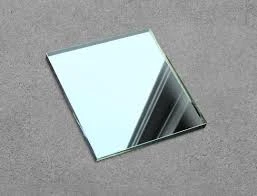

The Allure of Satin Pattern Glass A Timeless Design Element
Satin pattern glass has captivated the imagination of designers, architects, and art enthusiasts alike for centuries. Its unique texture and subtle sheen not only enhance the aesthetic appeal of various applications but also add a layer of sophistication to spaces. This article delves into the origins, characteristics, and contemporary uses of satin pattern glass, showcasing why it remains a timeless design element in today’s world.
Origins and Historical Significance
The roots of satin pattern glass can be traced back to the late 19th century when artisans began experimenting with new techniques to create unique glass finishes. The process usually involves the use of acid, which etches the surface of the glass to produce a soft, frosted appearance akin to satin fabric. This innovative method allowed glassmakers to deviate from the conventional clear or colored glass, giving rise to a plethora of design possibilities.
As satin pattern glass gained popularity, it became a favored material for various applications, including windows, decorative panels, and lighting fixtures. Its softness and ability to diffuse light created an inviting atmosphere, making it a staple in both residential and commercial architecture. The elegance of satin pattern glass can be seen in many historical buildings, churches, and art nouveau structures, where it added an air of refinement.
Characteristics of Satin Pattern Glass
One of the most appealing features of satin pattern glass is its ability to transmit light while ensuring privacy. The soft texture diffuses light beautifully, creating a warm and inviting ambiance without compromising on seclusion. This makes it an ideal choice for spaces such as bathrooms, entryways, or any area where light is desired but visibility is not.

Beyond its practical benefits, the aesthetic versatility of satin pattern glass is another reason for its enduring appeal. Available in various patterns—ranging from simple geometric designs to intricate floral motifs—satin glass can complement diverse architectural styles. Whether used in traditional settings or modern design schemes, it adds a touch of elegance and sophistication.
Contemporary Uses
In today’s design landscape, satin pattern glass continues to be a sought-after material. Architects and interior designers appreciate its ability to bring texture and depth to their projects. It is commonly used in a variety of applications, including cabinet doors, room dividers, shower enclosures, and even tabletops. With advancements in glass technology, satin pattern glass is now available in an array of colors and thicknesses, further expanding its versatility.
Moreover, satin pattern glass is increasingly being utilized in furniture design. Designers are integrating this material into various pieces—such as shelving units and side tables—to create visually striking contrasts. The interplay between the smooth surface of the glass and other materials like wood or metal offers a modern touch while maintaining a classic feel.
Eco-conscious design is also paving the way for the reimagining of satin pattern glass. Many manufacturers are focusing on sustainable practices by using recycled materials and environmentally friendly production methods, aligning the timeless beauty of satin glass with contemporary values.
Conclusion
Satin pattern glass is more than just a design element; it embodies a rich history and continues to inspire creativity in modern architecture and interior design. Its unique combination of beauty, functionality, and versatility ensures that it will remain a treasured choice for designers and homeowners alike. As we move forward, the evolution of satin pattern glass will undoubtedly intertwine with new technologies and sustainable practices, ensuring its relevance for generations to come. Whether in historical contexts or modern applications, satin pattern glass stands as a testament to the timeless nature of thoughtful design.